Fichas de peces (página 3)
Página 3 de 2657 especies de Peces con 60 fichas. Hay 17 géneros diferentes desde Allotoca hasta Amphiprion.
Lista des fichas de Allotoca dugesii a Amphiprion clarkii
- Allotoca dugesii

6,0 → 8,0 cm (> 80 L)
pH 7,0–8,0 | GH 8–20 | 20–24°C - Allotoca goslinei

3,0 → 5,0 cm (> 120 L)
pH 7,0–7,5 | GH 5–12 | 16–28°C - Alopias vulpinus

300,0 → 600,0 cm - Alosa fallax
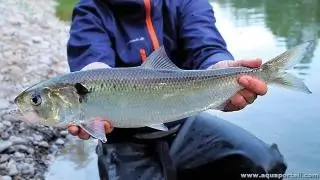
30,0 → 60,0 cm (> 6000 L)
pH 8,0–8,5 | GH | 5–26°C - Alosa pseudoharengus

15,0 → 40,0 cm (> 6000 L)
pH 8,0–8,5 | GH | 4–28°C - Alosa sapidissima

50,0 → 76,0 cm (> 6000 L)
pH 8,0–8,5 | GH | 5–25°C
- Altolamprologus calvus
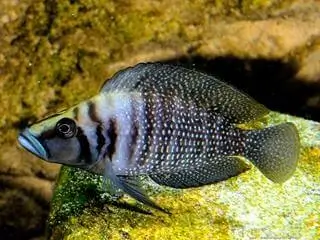
10,0 → 14,0 cm (> 300 L)
pH 7,5–9,0 | GH 8–30 | 24–27°C - Altolamprologus compressiceps
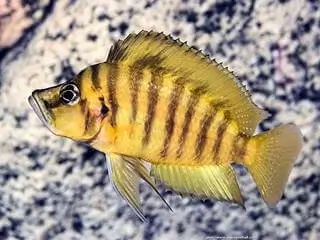
10,0 → 15,0 cm (> 300 L)
pH 7,5–9,0 | GH 8–30 | 24–28°C - Amatitlania altoflava

8,0 → 9,0 cm (> 300 L)
pH 6,5–7,5 | GH 3–8 | 23–28°C - Amatitlania kanna

8,0 → 9,0 cm (> 120 L)
pH 7,0–7,5 | GH 10–25 | 23–27°C - Amatitlania myrnae

7,0 → 10,0 cm (> 120 L)
pH 7,0–8,5 | GH 15–30 | 23–26°C - Amatitlania nanolutea

4,5 → 6,5 cm (> 80 L)
pH 7,0–8,0 | GH 8–20 | 22–27°C - Amatitlania nigrofasciata

8,0 → 12,0 cm (> 120 L)
pH 7,0–8,0 | GH 10–20 | 20–36°C - Amatitlania nigrofasciata var. Marble

8,0 → 13,0 cm (> 200 L)
pH 6,5–7,5 | GH 5–15 | 22–29°C - Amatitlania sajica

8,0 → 12,0 cm (> 120 L)
pH 6,5–7,5 | GH 5–20 | 22–30°C - Amatitlania septemfasciata

10,0 → 13,0 cm (> 200 L)
pH 6,5–7,5 | GH 5–15 | 21–27°C - Amatitlania siquia

7,0 → 9,5 cm (> 120 L)
pH 7,0–8,5 | GH 10–30 | 22–28°C - Amatitlania sp. Honduran Red Point

8,0 → 12,0 cm (> 200 L)
pH 7,0–8,0 | GH 8–20 | 22–30°C - Ambassis interrupta

7,0 → 10,5 cm (> 200 L)
pH 7,0–8,0 | GH 8–30 | 26–32°C - Ambastaia nigrolineata

6,0 → 8,0 cm (> 120 L)
pH 6,5–7,5 | GH 3–10 | 15–25°C - Ambastaia sidthimunki

4,5 → 5,5 cm (> 120 L)
pH 6,0–7,5 | GH 3–12 | 22–30°C - Amblydoras nauticus

6,0 → 7,5 cm (> 200 L)
pH 5,0–7,5 | GH 3–15 | 23–27°C - Amblyeleotris aurora

9,0 → 11,0 cm (> 80 L)
pH 8,0–8,5 | GH | 23–28°C - Amblyeleotris diagonalis
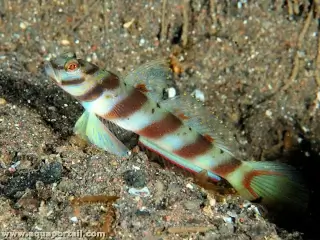
9,0 → 11,0 cm (> 120 L)
pH 8,0–8,5 | GH | 22–26°C
- Amblyeleotris guttata

8,0 → 11,0 cm (> 120 L)
pH 8,0–8,5 | GH | 23–28°C - Amblyeleotris harrisorum

7,0 → 10,0 cm (> 120 L)
pH 8,0–8,5 | GH | 23–28°C - Amblyeleotris latifasciata

11,0 → 13,0 cm (> 200 L)
pH 8,0–8,5 | GH | 23–28°C - Amblyeleotris randalli

10,0 → 12,0 cm (> 120 L)
pH 8,0–8,5 | GH | 23–28°C - Amblyeleotris wheeleri

5,0 → 6,5 cm (> 50 L)
pH 8,0–8,5 | GH | 23–28°C - Amblyeleotris yanoi

6,0 → 12,0 cm (> 120 L)
pH 8,0–8,5 | GH | 23–28°C - Amblygobius albimaculatus

12,0 → 18,0 cm (> 200 L)
pH 8,0–8,5 | GH | 23–28°C - Amblygobius bynoensis

8,0 → 10,0 cm (> 200 L)
pH 8,0–8,5 | GH | 23–28°C - Amblygobius decussatus

6,0 → 9,0 cm (> 200 L)
pH 8,0–8,5 | GH | 23–28°C - Amblygobius phalaena

12,0 → 15,0 cm (> 450 L)
pH 8,0–8,5 | GH | 23–28°C - Ameca splendens

8,0 → 12,0 cm (> 120 L)
pH 6,5–8,0 | GH 10–30 | 23–29°C - Ameiurus catus

30,0 → 95,0 cm (> 6000 L)
pH 6,5–8,5 | GH 10–30 | 2–30°C - Ameiurus melas

25,0 → 60,0 cm (> 1500 L)
pH 5,5–8,0 | GH 3–25 | 8–30°C - Ameiurus nebulosus

25,0 → 55,0 cm (> 6000 L)
pH 6,0–8,0 | GH | 2–36°C - Amia calva

60,0 → 90,0 cm (> 1500 L)
pH 6,0–7,5 | GH 5–25 | 15–24°C - Ammocryptocharax elegans

2,8 → 3,3 cm (> 20 L)
pH 5,0–6,5 | GH 1–5 | 23–27°C - Amphichaetodon howensis

15,0 → 18,0 cm (> 450 L)
pH 8,0–8,5 | GH | 20–25°C - Amphilophus amarillo

14,0 → 20,0 cm (> 450 L)
pH 6,0–7,5 | GH 5–12 | 24–29°C - Amphilophus citrinellus

20,0 → 30,0 cm (> 1500 L)
pH 7,0–8,0 | GH 10–30 | 23–33°C - Amphilophus hogaboomorum

20,0 → 33,0 cm (> 800 L)
pH 7,0–8,5 | GH 5–25 | 25–34°C - Amphilophus istlanus

20,0 → 30,0 cm (> 800 L)
pH 7,0–8,0 | GH 5–15 | 26–32°C - Amphilophus labiatus

22,0 → 30,0 cm (> 800 L)
pH 7,0–8,0 | GH 5–20 | 24–28°C - Amphilophus lyonsi

12,0 → 16,0 cm (> 800 L)
pH 7,0–8,0 | GH 1–15 | 25–29°C - Amphilophus trimaculatus

25,0 → 36,0 cm (> 1500 L)
pH 6,5–7,0 | GH 3–8 | 25–30°C - Amphilophus xiloaensis

14,0 → 16,0 cm (> 450 L)
pH 6,0–7,5 | GH 5–12 | 23–27°C - Amphilophus zaliosus

18,0 → 22,0 cm (> 450 L)
pH 6,0–7,5 | GH 5–12 | 23–28°C - Amphiprion akallopisos

9,0 → 11,0 cm (> 120 L)
pH 8,0–8,5 | GH | 23–28°C - Amphiprion akindynos

7,0 → 11,0 cm (> 80 L)
pH 8,0–8,5 | GH | 23–28°C - Amphiprion allardi
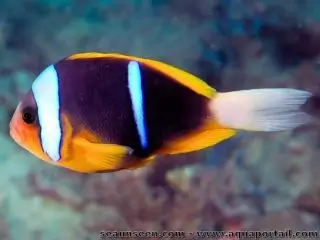
10,0 → 15,0 cm (> 300 L)
pH 8,0–8,5 | GH | 23–28°C - Amphiprion barberi

7,0 → 9,0 cm (> 120 L)
pH 8,0–8,5 | GH | 23–28°C - Amphiprion biaculeatus

9,0 → 18,0 cm (> 300 L)
pH 8,0–8,5 | GH | 23–28°C - Amphiprion bicinctus

11,0 → 14,0 cm (> 120 L)
pH 8,0–8,5 | GH | 23–28°C - Amphiprion chagosensis

9,0 → 11,0 cm (> 120 L)
pH 8,0–8,5 | GH | 23–28°C - Amphiprion chrysogaster
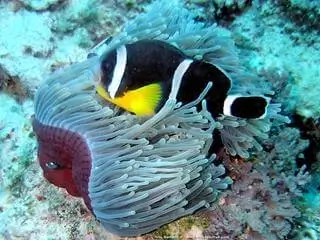
10,0 → 14,0 cm (> 200 L)
pH 8,0–8,5 | GH | 23–28°C - Amphiprion chrysopterus
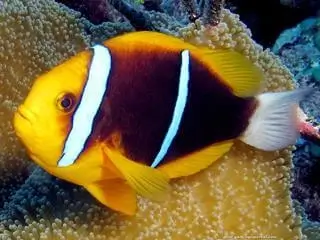
12,0 → 15,0 cm (> 300 L)
pH 8,0–8,5 | GH | 23–28°C - Amphiprion clarkii

9,0 → 13,0 cm (> 200 L)
pH 8,0–8,5 | GH | 23–28°C
Los datos biológicos de las especies indican el tamaño en cm y, si los valores son relevantes, otras características específicas.
